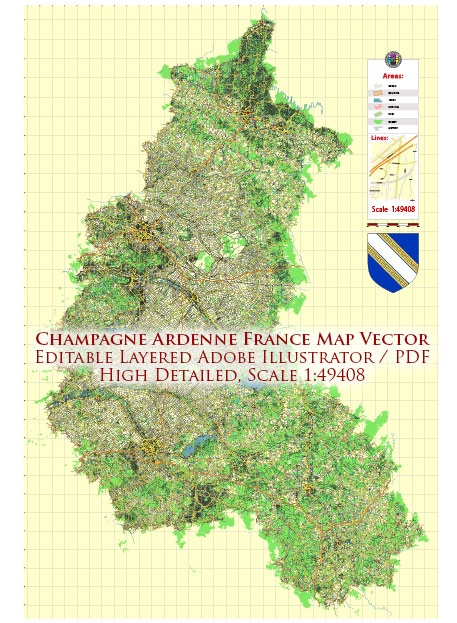Champagne-Ardenne is a historical region in northeastern France, known for its Champagne wine production and diverse landscape. Water resources in the Champagne-Ardenne region are primarily managed by the local authorities and water management agencies. Here are some key aspects of water resources in the Champagne-Ardenne region:
- Rivers: The region is home to several rivers, including the Seine, Marne, and Aube. The Seine River, in particular, is significant and flows through the northern part of the region. These rivers play a crucial role in providing water for various purposes, including agriculture, industry, and public consumption.
- Groundwater: Groundwater is an essential source of drinking water and irrigation in Champagne-Ardenne. The region relies on aquifers and underground water sources to meet the water needs of its population and agriculture.
- Reservoirs and Lakes: Champagne-Ardenne has a number of reservoirs and natural lakes. Some of these water bodies serve as sources of drinking water and recreation, while others are used for agricultural and industrial purposes.
- Rainfall: The region experiences a temperate oceanic climate, characterized by moderate rainfall throughout the year. Adequate rainfall contributes to the replenishment of rivers, lakes, and aquifers, ensuring a consistent water supply.
- Water Management: Water resources in Champagne-Ardenne are managed by various local and regional water agencies, as well as the French government. These agencies oversee water quality, supply, and usage, and work to ensure sustainable water management practices.
- Agricultural Use: Agriculture is a significant water user in the region, and water resources are vital for crop irrigation and livestock. Sustainable water management practices and regulations are in place to balance the needs of agriculture with environmental concerns.
- Environmental Conservation: The region’s water resources also play a crucial role in supporting the natural environment, including wetlands, forests, and aquatic ecosystems. Conservation efforts are made to protect and preserve these habitats.
- Industry and Urban Consumption: Water is an essential resource for industrial processes and urban consumption. Local municipalities and industries are responsible for managing their water use efficiently and ensuring that water quality standards are met.
- Flood Management: Given the presence of rivers and the risk of flooding, the region has flood management systems in place to minimize the impact of flooding events. This includes the maintenance of levees, flood barriers, and early warning systems.
Water resource management in Champagne-Ardenne, like in many regions, is a complex and multifaceted task that involves various stakeholders, regulations, and conservation efforts to balance the needs of the environment, agriculture, industry, and public consumption while ensuring the sustainability of this vital resource.


 Author: Kirill Shrayber, Ph.D.
Author: Kirill Shrayber, Ph.D.